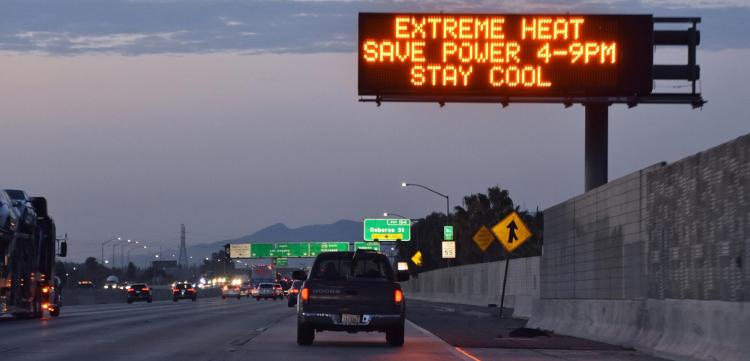Colorado’s March Heatwave: Denver to Break 60-Year Temperature Records- What You Need to Know!
Colorado’s weather has taken an unexpected turn this March, with temperatures soaring to record highs, creating unusual conditions across the state. Normally, March is a transitional month for Colorado, marked by cool, wet weather and occasional snow. However, this year, the weather pattern seems to be flipping on its head as the state braces for warmer-than-usual temperatures, and a delayed La Niña phenomenon begins to influence the forecast.
Denver’s Rollercoaster March Weather
Denver, the state’s largest city, has been experiencing a dramatic swing in temperatures. For example, Friday, March 21, saw partly sunny skies with temperatures reaching highs of 58°F (15°C). By Saturday, temperatures were expected to climb to 65°F (18°C) with windier conditions, and by Sunday, March 23, the city could expect highs of around 63°F (17°C).
But the real surprise comes next week. As temperatures continue to rise, Monday, March 24, could see highs of 71°F (22°C), with lows near 42°F (6°C). This will be followed by a continuation of the unseasonable warmth, with highs reaching as high as 83°F (28°C) by Wednesday, March 26, and peaking at 85°F (29°C) on Thursday, March 27. These are temperatures more typical of early summer rather than spring, and they could break long-standing records for this time of year.
This rapid warm-up is alarming, especially considering that March typically brings cooler, wet conditions before the heat of summer arrives. Denver’s residents have already begun to notice the change, with the unseasonable warmth forcing many to swap winter coats for spring jackets.

A Statewide Snowpack and Water Concerns
The warmth in Denver and across Colorado raises several important concerns. One of the major issues is the state’s snowpack. Snowmelt is crucial for Colorado’s water supply, especially for agriculture and municipal needs. As of late February, Colorado’s snowpack was at 92% of the 30-year average, but the snowmelt could occur much earlier than expected due to the rising temperatures. This could reduce water supplies for the upcoming months. The northern parts of the state, including the Colorado River headwaters, have seen snowpack levels at or above average, while the southern areas are seeing much lower levels—around 64% of normal. This uneven snowpack raises concerns for areas that rely on the runoff for irrigation during the spring and summer months.
La Niña’s Impact on Colorado’s Weather
La Niña, a climate pattern characterized by cooler-than-normal sea surface temperatures in the central Pacific Ocean, is traditionally linked to wetter and cooler conditions in Colorado. However, this year, La Niña’s delayed arrival has resulted in a departure from typical expectations. Instead of cooler temperatures, Colorado is experiencing dry, warm weather, which has increased the risks of wildfires. Experts suggest that this La Niña event, though weak, is still influencing the weather, creating an imbalance of temperature and moisture across the state. The National Oceanic and Atmospheric Administration (NOAA) forecasts that this phenomenon could persist through the end of April and transition to neutral conditions by May, which would likely result in less predictable weather patterns moving forward.
Looking Ahead: A Hot, Dry Spring?
As the state enters the final days of March and moves into April, Coloradans can expect to see a continuation of warm, dry weather. The unseasonable warmth brought on by La Niña will likely continue to influence Colorado’s weather patterns throughout the spring. Residents and farmers alike need to remain vigilant, prepare for possible water shortages, and take steps to reduce fire risks as the early fire season begins. With unpredictable weather patterns becoming the new norm, Colorado must prepare for what could be a challenging and hot spring and summer ahead.


Comments are closed, but trackbacks and pingbacks are open.